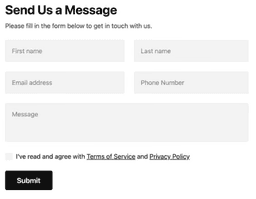Can Pygame Really Outdo Unity?
Unity and Pygame serve diverse domains. If you’re new to game development or creating simple games, Pygame is your best choice – it’s accessible and easier to grasp. However, for more advanced, immersive 3D and 2D games, or AR/VR features, go for Unity despite its changing pricing structures.

Key Differences Between Pygame and Unity
- Coding: Pygame uses Python, C and Assembly languages. Unity allows coding in BOO script, Javascript and C#.
- Community Support: Both provide ample community support for problem-solving and feedback.
- Pricing: Pygame operates under GNU License, essentially free. Unity offers free and paid versions, with a new per-install fee structure to be implemented from 2024.
- Application: Pygame is used for creating simple games and learning, Unity for creating sophisticated 3D, 2D games and AR/VR applications.
- Speed: Pygame code is faster than Python code. Unity’s speed can vary depending upon the complexity of the game.
| Comparison | Pygame | Unity |
|---|---|---|
| Initial Release | October 28, 2000 | 2005 |
| Language | Python, C, Cython, Assembly | BOO script, Javascript, C# |
| Cross-Platform | Yes | Yes |
| License | GNU Lesser General Public License | Proprietary, with subscription fee |
| Community Support | Community Driven | Active developer community |
| Operating System Compatibility | Highly Portable, compatible with most OS | Adaptable with several OS |
| Mobile Compatibility | Android, with sound, vibration, keyboard, and accelerometer support | Android, iOS |
| 2D/3D Game Creation | 2D Primarily | Both 3D and 2D |
| Availability | Freeware, shareware, and commercial games | Free version, Pro version, per-install fees |
| Pricing Model | Open-source, no fees | Pricing restructured in 2024, fees for each install |
What Is Pygame and Who’s It For?
Pygame, a set of Python modules adept in video game creation, came into existence on October 28, 2000, with its latest stable release, version 2.5.0, rolled out in June 2023. The tool leverages the GNU Lesser General Public License and the Simple DirectMedia Layer (SDL) library, with code written in Python, C, Cython, and Assembly. Its cross-platform capabilities, coupled with its fostering of a congenial and learning-based environment for novice programmers, has made it one of the preferred choices for game developers globally.
Pygame is highly portable, supporting nearly all operating systems. Deriving power from community-driven development, it offers a myriad of features like sound, vibration, keyboard, accelerometer support, and more. It serves beginners, college students, first-time programmers, and is even used for teaching programming to young kids. Noted games like Frets on Fire, Drawn Down Abyss, and others are proud creations of Pygame.

Pros of Pygame
- Compact token length
- Extensive cross-platform capabilities
- Community-oriented, tutorials for beginners
- Flexible; works on handheld devices, game consoles, OLPC computers
- Facilitates creation of open-source, shareware, commercial games
Cons of Pygame
- Limited to 2D sprite scene
- Lacks built-in 3D function capabilities
- Slow in comparison to languages like C++ or Java
What Is Unity and Who’s It For?
Unity is a formidable game development engine launched in 2005, serving as the bedrock for creating robust 3D and 2D games. A suite of incredible tools, rendering technology, and features make Unity a favored choice for game developers, allowing for a diverse array of applications from AR to 3D simulations. However, it has faced backlash after the announcement of a new pricing model, with developers seeing potential threats to their financial sustainability.
Unity offers a free version along with a Pro version packed with remarkable features. The upcoming per-install pricing model effective from January 1, 2024, has created quite a stir in the developer’s community. It claims to carry forward a digital preservation approach, promising not to levy any charge until the game surpasses $200,000 in revenue and 200,000 installations.

Pros of Unity
- Supports 3D and 2D game creation
- Cross-platform capabilities
- Rich asset store with pre-designed textures and features
- Active developer community
Cons of Unity
- Concerns over new pricing model
- Diminished trust due to unannounced changes
- Increased fee for ‘standard’ markets
Code Examples for Pygame & Unity
Pygame
This example creates a side-scroller game with a player and moving background in Pygame. Make sure you already have Pygame installed in your Python environment.
import pygame
import os
win_width = 800
win_height = 600
class Player(pygame.sprite.Sprite):
def __init__(self):
super().__init__()
def update(self):
keys = pygame.key.get_pressed()
if keys:
self.rect.x -= 5
if keys:
self.rect.x += 5
pygame.init()
screen = pygame.display.set_mode((win_width, win_height))
clock = pygame.time.Clock()
all_sprites = pygame.sprite.Group()
player = Player()
all_sprites.add(player)
running = True
while running:
clock.tick(30)
for event in pygame.event.get():
if event.type == pygame.QUIT:
running = False
all_sprites.update()
screen.fill((0, 0, 0))
all_sprites.draw(screen)
pygame.display.flip()
pygame.quit()Unity
This script allows a Unity 3D object to follow a circular path. Ensure you have the Unity engine and an object prepared.
// Attach this script to the object you want to move
using UnityEngine;
public class CircleMotion : MonoBehaviour {
public float speed = 10f;
private float xPos;
private float yPos;
private float radius = 5f;
private float angle = 0f;
void Update()
{
xPos = Mathf.Cos(angle) * radius;
yPos = Mathf.Sin(angle) * radius;
transform.position = new Vector3(xPos, yPos, 0);
angle = angle + Time.deltaTime * speed;
if (angle >= 360f) {
angle = 0f;
}
}
}Pygame or Unity: Making the Tactical Decision
In this high-stakes game of choice between Pygame and Unity, we carve clear a path of navigation for distinct audience segments.
BEGINNERS & NOVICE PROGRAMMERS
If you’re just tiptoeing into the wide world of game development, Pygame might be your best bet. With its simplicity, accessibility, and compatibility across countless operating systems, it serves as a relatively forgiving entry-point. Its handheld device and game console compatibility only adds to its allure.

INDIE DEVELOPERS AND FREELANCERS
Feeling out the solo route or operating with a limited budget? Pygame might still be the weapon of choice, particularly with its potential to create an array of open source, freeware, and shareware games. Avoid the potential burden of Unity’s new per-install fees that might drain an indie budget.

ADVANCED AUGMENTED REALITY (AR)/VIRTUAL REALITY (VR) CREATORS
Developers in the AR/VR sector eager to create visually immersive experiences should look to Unity. It offers advanced AR/VR features, sophisticated tools, and a rich asset store that can outdo Pygame’s 2D-oriented architecture. Unity’s continuous evolution makes it a potent tool for superior AR/VR game development.

If simplicity steals your favor, Pygame, with its accessibility and beginner-friendliness, wins hands down. For advanced AR/VR creations and immersive experiences, lean towards Unity. The choice resonates with your development priorities, skills, and financial planning.







